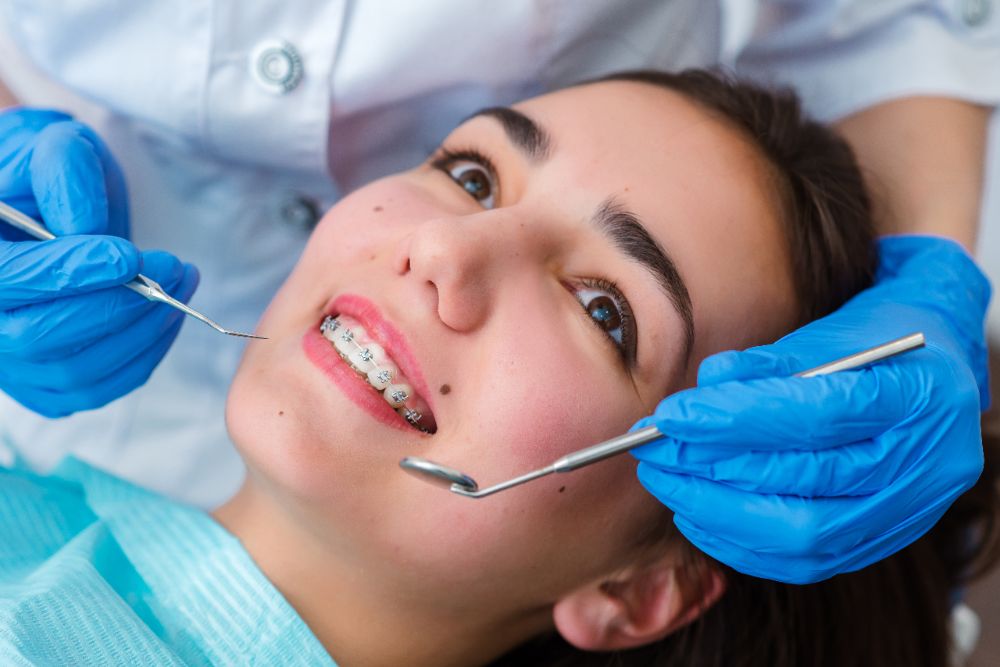Comprehensive Overview to Orthodontics Procedures for Correcting Oral Misalignments
Comprehending the complexities of each treatment, including their devices, benefits, and possible drawbacks, is essential in making notified decisions concerning one's orthodontic treatment. As we navigate with the comprehensive overview to orthodontic treatments for fixing oral imbalances, the detailed information of each method will unfold, losing light on the course towards a functional and unified oral placement.
Orthodontic Procedures Summary

Routine changes and surveillance are vital components of orthodontic therapy to ensure progress is on track and to make any type of needed alterations along the means. By undertaking orthodontic treatments, clients can not just accomplish a straighter smile but likewise improve their total oral health and function.
Traditional Braces: Exactly How They Work
When considering orthodontic treatments for dental imbalances, standard braces attract attention as a tried and true technique for correcting teeth positioning. Traditional braces contain braces, cables, and bands that work with each other to apply continual stress on the teeth, gradually relocating them into the preferred alignment. The brackets are affixed to the teeth using a special adhesive, and the wires are threaded via the brackets. By changing the stress of the cords, orthodontists can regulate the direction and pressure applied to each tooth, directing them into proper alignment in time.
One trick aspect of how typical braces work is the procedure of bone makeover. As stress is applied to the teeth via the braces, the bone surrounding the teeth is reshaped to sustain the new tooth settings. This improvement is vital for the lasting stability of the fixed positioning. People will need routine modifications at the orthodontist's workplace to make certain the braces remain to use the appropriate stress for efficient teeth movement.
Unseen Aligners: Benefits And Drawbacks
These clear, custom-made trays are virtually invisible when worn, making them an attractive option for individuals seeking a much more cosmetically pleasing orthodontic therapy. People can remove the aligners prior to eating or brushing their teeth, lowering the threat of food getting stuck in the appliance and streamlining the cleaning process.

Surgical Orthodontic Options
Surgical interventions in orthodontics present viable options for addressing complex oral misalignments that might not be properly fixed through traditional orthodontic therapies. While standard braces and undetectable aligners can fix several orthodontic concerns, particular situations need surgical intervention to attain ideal results. Surgical orthodontic choices are normally recommended for extreme malocclusions, considerable jaw inconsistencies, and cases where the underlying bone framework needs modification to achieve correct alignment.
One common surgical orthodontic treatment is orthognathic surgical procedure, which involves repositioning the jaws to fix functional issues such as problem eating or speaking. This surgical procedure is frequently performed in partnership like it with an orthodontist that helps align the teeth prior to and after the treatment. Surgical orthodontics might also include treatments to subject impacted teeth, eliminate excess gum tissue, or improve the jawbone to create a more harmonious face profile.
Before taking into consideration medical orthodontic choices, people undertake a comprehensive evaluation to establish the need and prospective advantages of such interventions. aligners. While surgical treatment may seem difficult, it can significantly improve both the feature and looks of the smile in instances where conventional orthodontic therapies fail
Retainers and Post-Treatment Care

Post-treatment care entails complying with the orthodontist's directions carefully. This might include correct oral hygiene practices, attending follow-up visits, and using the retainers as suggested. Failure to comply with post-treatment care instructions can lead to relapse, where the teeth progressively return in the direction of their initial placements. Constant retainer wear, good dental health, and routine oral exams are essential for maintaining the outcomes attained through orthodontic surgical procedure and making sure the long-term stability of the corrected dental alignment.
Verdict
In conclusion, orthodontic procedures provide different options for fixing oral imbalances. Surgical orthodontic alternatives are offered for more severe imbalances. Generally, orthodontic treatments can effectively enhance dental health and wellness and aesthetic appearance.
As we navigate through the extensive guide to orthodontic treatments for correcting oral misalignments, the detailed information of each approach will unravel, shedding light on the course towards a unified and practical dental placement. - cumming aligners
One of the most typical orthodontic therapies is the usage of dental braces, which consist of steel brackets and cables that use mild pressure to slowly shift teeth right into the wanted setting.When thinking about orthodontic therapies for dental misalignments, typical braces stand out as a investigate this site reliable technique for correcting teeth placing. In addition, undetectable aligners might not be suitable for complicated orthodontic issues that call for even more substantial teeth motion, as they are usually suggested for mild to modest cases. Retainers are custom-made orthodontic devices made to hold teeth in their corrected positions after the conclusion of orthodontic therapy.